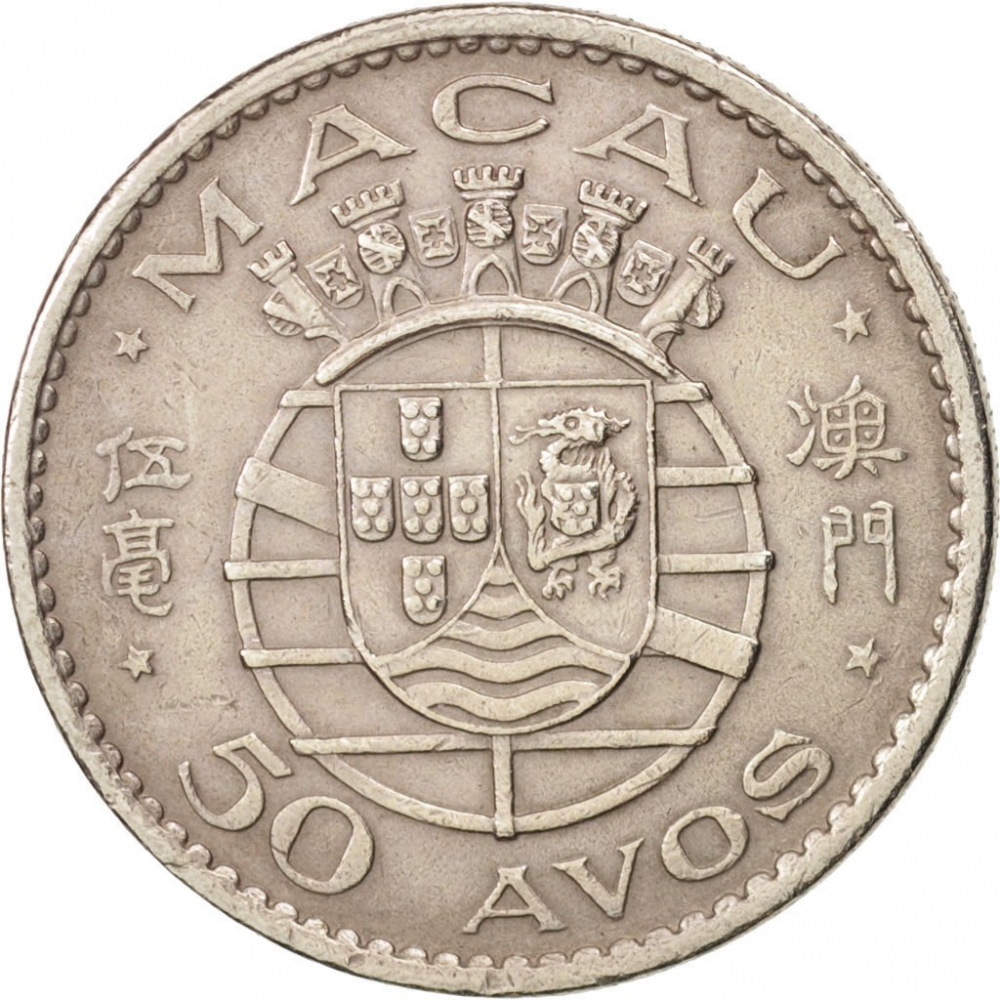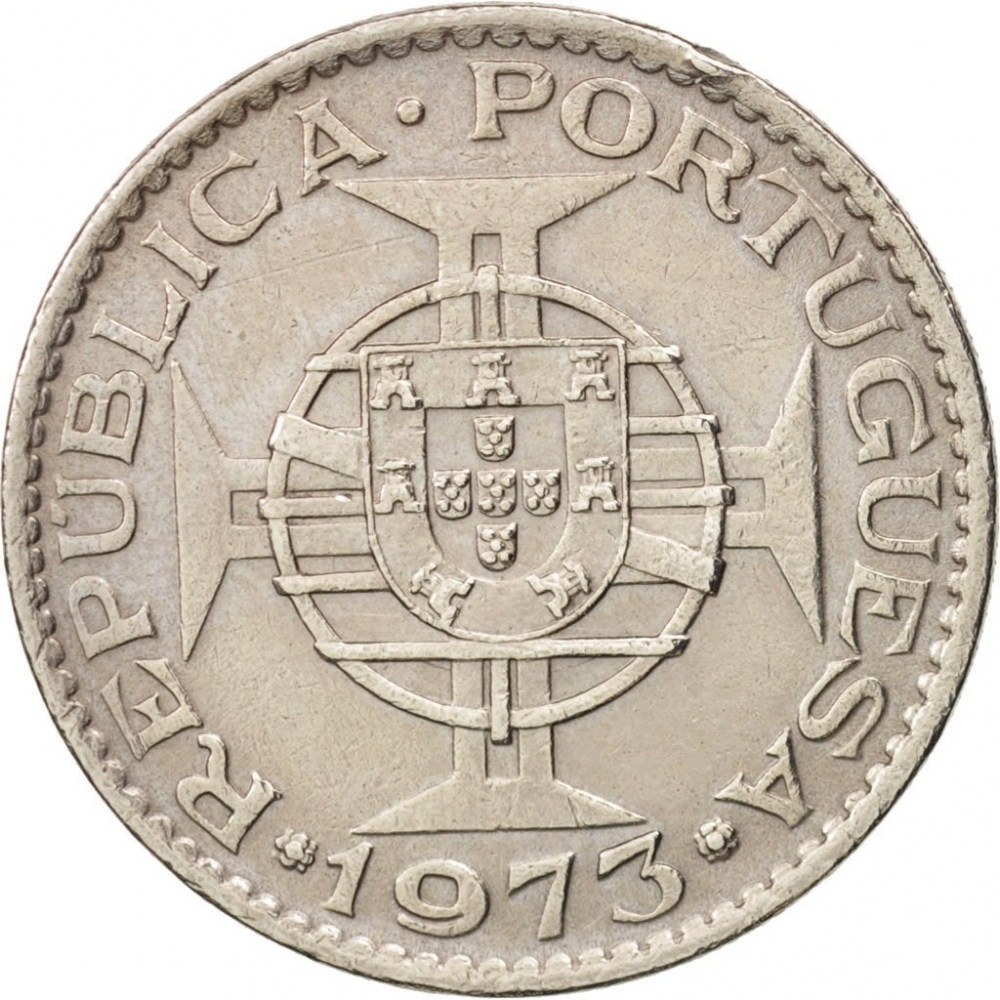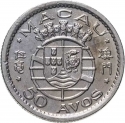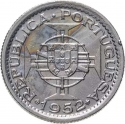You are about to finish your registration. Please check your mailbox (including spam folder). There should be a letter with a confirmation link. Check setting to make sure that your e-mail address is correct.
Send letter againDescription
Portuguese Macau refers to the period from the mid-16th century until 1999 when Macau, a small territory on the southern coast of China, was under Portuguese administration. Established as a trading post in 1557, Macau became a vibrant hub for commerce between Europe and Asia. It developed a unique cultural blend of Portuguese and Chinese influences, visible in its architecture, language, and traditions. In 1999, Macau was officially handed over to China, becoming a Special Administrative Region (SAR) while maintaining a high degree of autonomy under the "one country, two systems" framework.
Obverse

|
Depicts the coat of arms of Portuguese Macau, encircled by the colony's name in Portuguese at the top, Cantonese inscriptions on both sides, and the value positioned below. ⋆ MACAU ⋆ |
|---|---|
Reverse

|
Depicts Portuguese escutcheon on upon a golden armillary sphere, name of country above, date below. REPUBLICA·PORTUGUESA |
| Edge |
Characteristics
| Material | Cupronickel |
| Weight | 5.8 g |
| Diameter | 23 mm |
| Thickness | - |
| Shape |
|
| Alignment | Coin |
| Mint |
Portuguese Mint and Official Printing Office (INCM)
|



